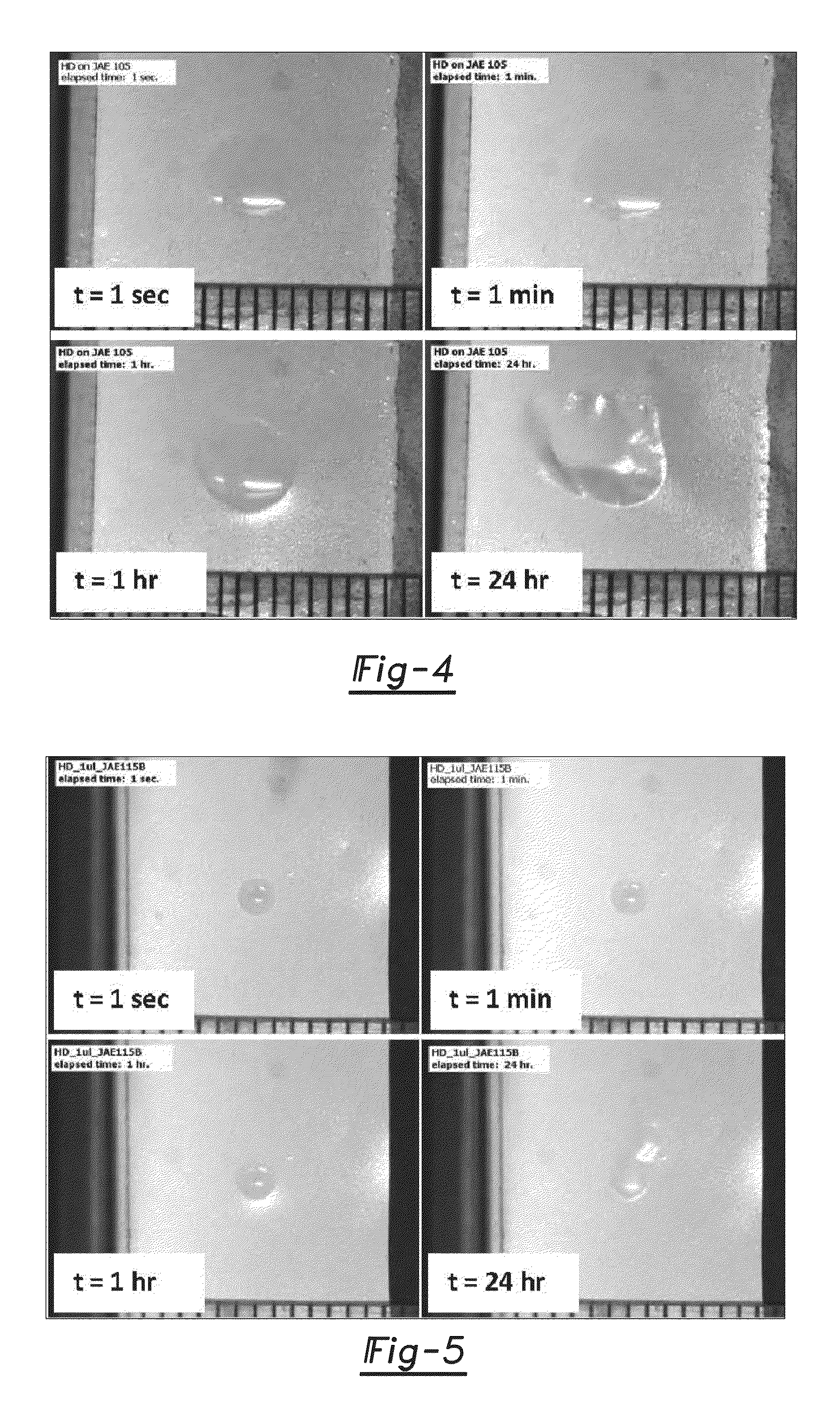Surface segregating additives for enhanced chemical agent resistant topcoats
a technology of additives and topcoats, applied in the field of modified polymer topcoats, can solve the problems of no inherent self-decontamination capability, and achieve the effects of improving hydrophobicity and/or oleophobicity, improving dispersion in the water-dispersed topcoat, and high core molecular weigh
- Summary
- Abstract
- Description
- Claims
- Application Information
AI Technical Summary
Benefits of technology
Problems solved by technology
Method used
Image
Examples
examples
[0028]Table 1 provides a list of four water-dispersible topcoat compositions according to one or more embodiments of the present invention. The two soluble compositions (SA-1, SA-2) had an HBP with buoy groups of fluorinated chain ends and aliphatic chain ends coupled thereto while the two water-dispersible compositions (DA-1, DA-2) had an HBP with only aliphatic ester chain ends attached thereto.
[0029]The identifiers SA-1 and DA-1 correspond to an HBP prepared from the Boltorn H20 core whereas the identifiers SA-2 and DA-2 correspond to the same HBP chain end composition prepared from the Boltorn H50 core, and therefore having a higher core molecular weight. Both of the solvent-borne HBP samples (SA-1, SA-2) had a buoy group of perfluorooctanoic esters (PFOA) coupled thereto. In addition, each of the HBP samples had the aliphatic ester chain ends of —OCOC11H23 (C12) coupled thereto. In contrast, both of the water-dispersible HBP samples (DA-1, DA-2) had the aliphatic ester chain en...
PUM
| Property | Measurement | Unit |
|---|---|---|
| contact angle | aaaaa | aaaaa |
| contact angle | aaaaa | aaaaa |
| contact angle | aaaaa | aaaaa |
Abstract
Description
Claims
Application Information
 Login to View More
Login to View More - R&D
- Intellectual Property
- Life Sciences
- Materials
- Tech Scout
- Unparalleled Data Quality
- Higher Quality Content
- 60% Fewer Hallucinations
Browse by: Latest US Patents, China's latest patents, Technical Efficacy Thesaurus, Application Domain, Technology Topic, Popular Technical Reports.
© 2025 PatSnap. All rights reserved.Legal|Privacy policy|Modern Slavery Act Transparency Statement|Sitemap|About US| Contact US: help@patsnap.com



